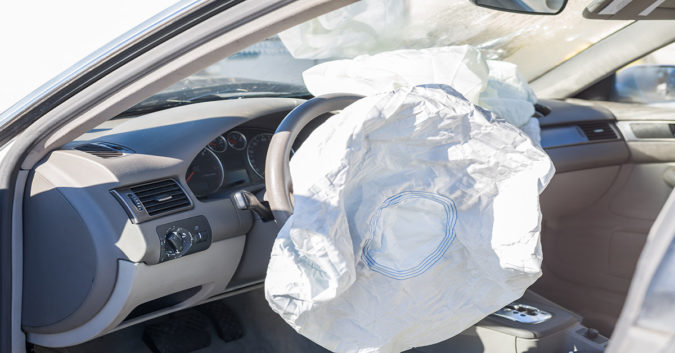In the United States, car crashes occur every hour of every day. According to data from the National Highway Traffic Safety Administration (NHTSA), there are on average more than 16,000 car crashes per day in the United States alone.
It should come as no surprise, then, that these accidents result in around 100 deaths per day or about 37,000 per year.
Millions more Americans are injured in traffic accidents, and some of these injuries are life-altering, to say the least — not to mention monstrously high medical bills and mental strain that’s often acute enough to cause post-traumatic stress disorder (PTSD).
While seatbelts, traffic laws, and improved vehicle safety design have helped save untold numbers of lives, nothing is foolproof. Many people who find themselves the victim of an accident were in no way at fault. They were simply in the wrong place at the wrong time.
In the aftermath of a car accident, it’s understandable for victims to be in complete shock. They may be at a loss as to what happened to them, how it happened, and what should be done about it. With emergency services, accident reports, bills, insurance, and injuries to deal with, the last thing anyone wants to think about is hiring a lawyer.
That said, hiring a lawyer could be a victim’s best way to recover funds that can pay for losses, injuries, treatment for PTSD, and more.
Why Should I Contact a Car Accident Attorney?
After a traffic accident, especially one involving a negligent driver, it is probably a good idea to at least talk to a car accident lawyer. Why? In a word: clarity.
A qualified car accident lawyer can help you navigate some of the difficult and often overwhelming terrain of insurance companies, legal liability, and medical bills. If you’ve gone through a traumatic experience, there’s no reason to deal with all of the mental anguish on your own, especially if you were not at fault.
A car accident attorney can relieve some of your stress by analyzing your case, determining liability, handling messy paperwork, and filing any necessary legal claims. They can also negotiate a financial settlement, helping you cover any bills, financial losses, and/or other mental health side effects caused by the accident.
How to Hire a Car Accident Attorney
Hiring a lawyer is a relatively simple process. If you’ve been in a traffic accident and feel confused or overwhelmed, your best course of action is to schedule a legal consultation.
Many law firms, including Sokolove Law, offer this service for free. Just call or fill out a simple form online, including information about when and where the accident occurred, and, if we are able to help you, one of our case managers will be in touch within 24 hours.
Below is a general, step-by-step roadmap for hiring a lawyer, and what to expect afterward.
- Request a free legal consultation by answering a few questions about the accident.
- Wait for a case manager to review your case and reach out to you.
- Schedule a free consultation with one of our attorneys. Whether in-person or online, our experts will inform you of your rights, and offer assistance for proceeding with claims.
- If you want to proceed, you can hire one of our lawyers to handle your case. It’s worth noting: Sokolove Law works on a contingency-fee-basis. That means you don’t pay anything upfront, there are no out-of-pocket expenses, and we only get paid if you receive financial compensation.
- Once hired, our lawyers will investigate the accident, determine the cause, and attempt to reach a financial settlement before filing a lawsuit.
- If no settlement is reached, our lawyers will file a lawsuit on your behalf. This launches the discovery phase, which is when both sides of the lawsuit investigate each other's claims, presenting evidence and arguments.
- Once discovery is complete, both parties will once again attempt to reach a settlement with the help of a neutral third-party.
- If no settlement is reached, the case may go to trial, at which point a jury has the final say on blame and liability and whether you, as the plaintiff, have a legitimate claim to financial compensation.
To reiterate, the above is a general representation of the car-accident legal claims process. Every accident and case is different, and there’s no predicting how something will play out. Generally speaking, most car accident cases will be settled out-of-court.
Time to File an Auto Accident Lawsuit is Limited
Every state has a different statute of limitations that determines how much time you have to file a lawsuit against a negligent driver. This time limit usually varies, depending on whether the claim is for property damage, personal injury, or wrongful death.
Regardless, given the statute of limitations, it’s always a good idea to start the legal process as soon as possible. Once the time limit has passed, the window for filing a lawsuit closes forever.
Don’t burden yourself with undue paperwork and stress: Let our team of legal experts handle it for you. We have more than 40 years of experience fighting insurance companies and winning our clients the compensation they deserve.
Don’t delay. Time is of the essence. Reach out for a free legal consultation today.
